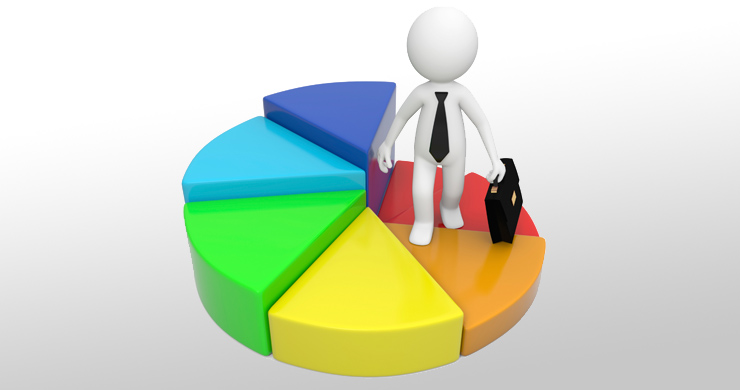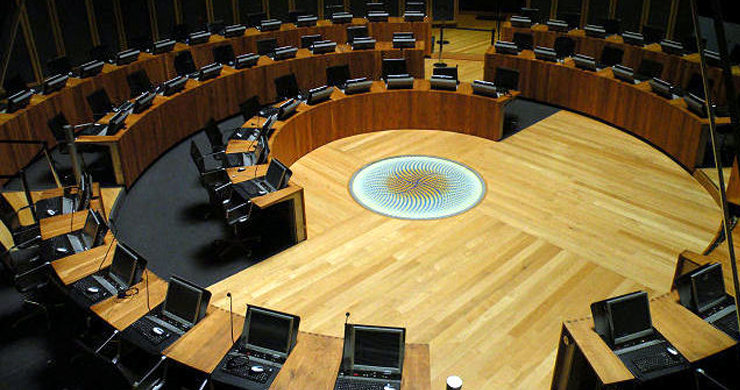2016 – The Welsh Government Election
Organise yourselves into 5 groups based on which of the following people you would vote for. Be prepared to explain why you choose your group.
Carwyn Jones - Labour Party

Image: Carwyn Jones 2011 - National Assembly For Wales / Cynulliad Cymru © Wikimedia Commons under Creative Commons Attribution 2.0 Generic
Andrew RT Davies - Conservative Party

Image: Andrew R. T. Davies - National Assembly For Wales / Cynulliad Cymru © Wikimedia Commons under Creative Commons Attribution 2.0 Generic
Leanne Wood - Plaid Cymru

Image: Leanne Wood AM - 2016 - Gareth Llewellyn, Plaid Cymru © Wikimedia Commons under Creative Commons Attribution-Share Alike 3.0 Unported
Kirsty Williams - Liberal Democrat Party

Image: Kirsty Williams 2011 - National Assembly For Wales / Cynulliad Cymru © Wikimedia Commons under Creative Commons Attribution 2.0 Generic
Nathan Gill - UKIP

Image: Wales UK Independence Party (UKIP) Leader and MEP Nathan Gill - Matthew Horwood © Alamy
2015 – The U.K. General Election
You could if you want form a separate group if you feel that you would want to be part of the Green Party or an Independent Candidate.
In 2016 we know that unless Wales wins the football European Championship then the two biggest news stories in Wales are almost certainly going to be about elections.
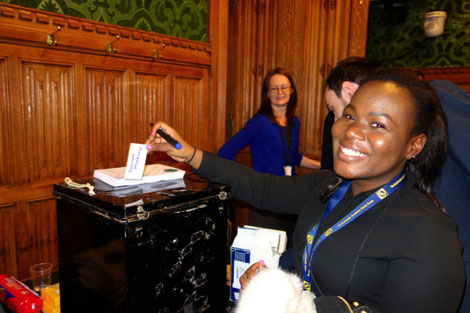
Photo from Parliament Week 2014 by Cabinet Office used under CC BY
In May the people of Wales will elect a new Welsh Government and In June along with the rest of the United Kingdom there will be a national vote called a referendum on whether the United Kingdom should leave the European Union (EU).
Geography in the News and Bias
This edition of Geography in the News has to be worded very carefully as there are strict rules about a government using public money for election campaigning.
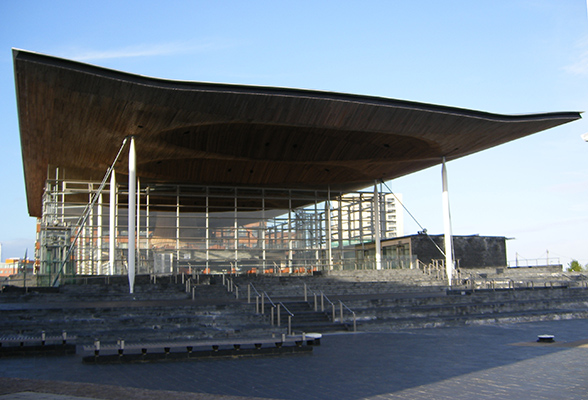
Image: Senned National Assembly for Wales © Wikimedia Commons under All rights released
Geography in the News is paid for by the Welsh Government, as such it would be unlawful for any aspect of these articles to seem to favour any candidates or party; no matter how big or small. Private media companies however such as most newspapers and many TV channels are not lawfully bound to be impartial, and instead, will put forward information which supports the political party that the owners prefer; it is very important to always look at such information in the news and analyse it for bias.
The Election
On May 6th the people of Wales will vote for a new Welsh Government. To vote in the election a person must be registered to vote, 18 years of age or over on polling day and a British citizen, a qualifying Commonwealth citizen, or a citizen of the European Union resident in Wales.
There are 40 constituencies, each represented by one AM (Assembly Member). In each constituency the candidate with the most votes is elected; they do not need to get more than half of the votes cast. This is sometimes called the first past the post system.
Download Map - Click below
There are also five regions which will each elect four regional AMs. There are 20 regional seats in total, which are awarded using a quota system. The quota is the total number of regional votes received by a party or independent candidate divided by the number of constituency seats already gained in that region +1.
So, for a party with no constituency seats the number of votes received is divided by one. If the party has one constituency seat in that region then its number of votes is divided by two, if it has two seats in that region it is divided by three, and so on.
This means that the more constituency seats a political party has won, the harder it is to gain any additional seats through the regional list system.
2011 Election Results
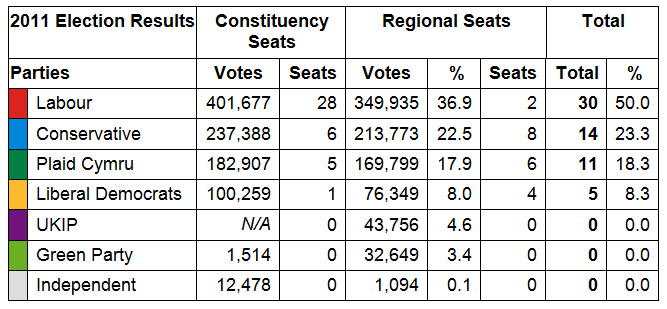
This table can be downloaded to change the seat numbers and see how it is represented as a chart.
Download Excel - Click below
Current Distribution of Seats
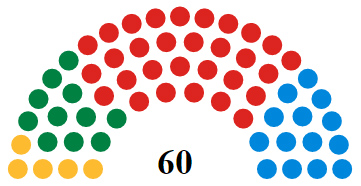
Image: Welsh Assembly 2011 - Barryob © Wikimedia Commons under Creative Commons Attribution-Share Alike 3.0 Unported
Student activity
Investigation
First read the rest of the linked resources and use the student resource sheet to help you carry out an investigation of the geography of the 2016 Welsh Government Election. Use it to formulate questions which you can follow up after the results are in for the 2016 vote in May and your own surveys/mock elections of your class, year group or whole school.
Introduction
- In this section you will explain what it is that you are investigating.
- You will choose questions for enquiry that you want to answer.
- You will explain important background information.
- Outline a plan of what you intend to do and what data you will collect.
Results
- Tabulate (put in tables) data.
- Convert the data into easier forms to interpret:
- Use graphs
- Simplify data into things like rounded numbers or a representative mean.
Analysis
- Show how your results answer your questions for enquiry:
- Annotate graphs and diagrams
- Construct paragraphs.
Conclusions
- For each of your enquiry questions what have you found out? What is the answer?
Evaluation
- Evaluate your process (how you carried out your investigations (methods)) – what was successful? What went wrong? What could you do differently next time?
- Evaluate your sources – (your information and data) which are reliable and why? Which might be biased and why?
- Evaluate your outcomes – (your conclusions) what is reliable and why? Which may be wrong or inaccurate and why?
- Formulate more questions for a future enquiry based on your findings; this is especially important to find out if your predictions may be correct after the election.
Teacher Box
The resource is designed to be used as whole class resource from the front of the classroom on the projector/interactive whiteboard.
The various graphics should be supported by teacher exposition based on the text which will not be readable in permitted time to the vast majority of pupils), following this it is ideal that the students have access to the online resource in order to work on the activity sheet (designed to be printed on A3 size paper).
Ideally these activities will be supported by the use of a network room, tablets/laptops or students own phones/devices if permitted.
However the activities are also designed to be used in a typical one hour lesson with the teacher input using the resource from the front of the classroom alongside the resource sheet.
Students can then be set a homework task to study the three articles in advance of the following lesson.
The resource and accompanying sheet is designed to support the LNF framework while giving students key geographical knowledge about places in relation to the elections in Wales in 2016.
Pupil Box
Either in class or at home read and complete the activities in the online resource article and in the linked articles in this edition of Geography in the News. Attempt to complete all of the activities in the resource sheet.
What you will learn:
- You will increase your knowledge about the elections in Wales in 2016.
- You will increase your understanding of how these factors may affect human beings and human activities
- You will have you the opportunity to learn or practice important literacy and numeracy skills.
You will learn new geographical terms highlighted in purple these should be learned and added to a glossary. A glossary is a list of words and their meanings. You could have one in the back of your geography exercise book, if you have a planner it is probably a good place to keep a glossary, or you may keep a separate glossary or word book. A good glossary helps you build your vocabulary and your literacy. Research meanings using related article content, discussion or a dictionary (either online or a book).
Related Articles...
